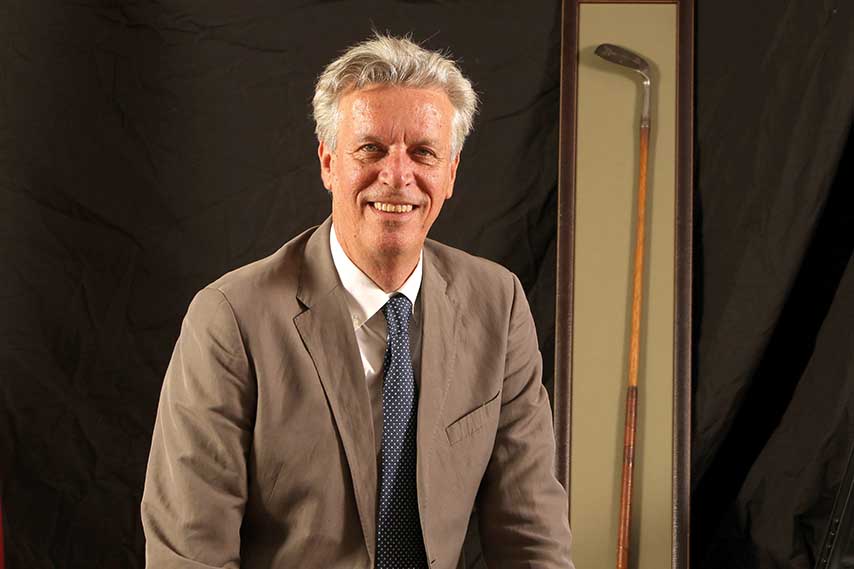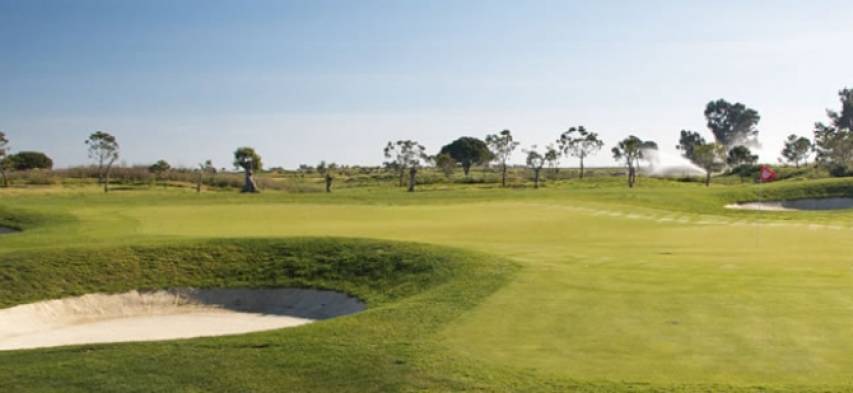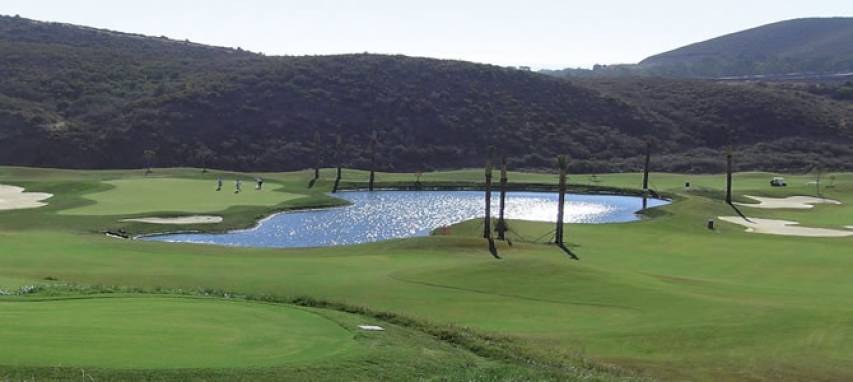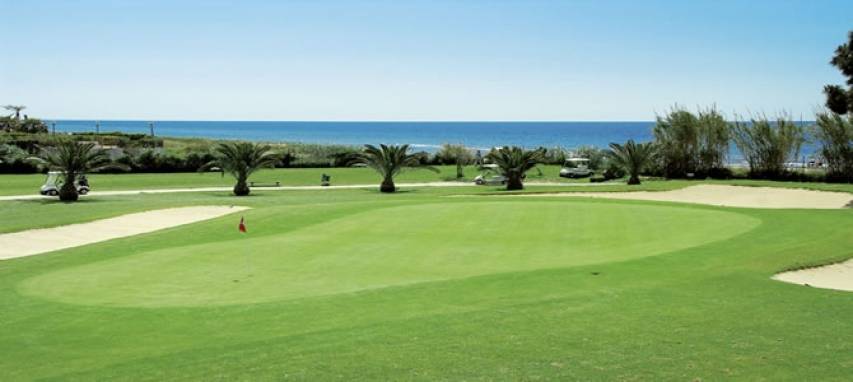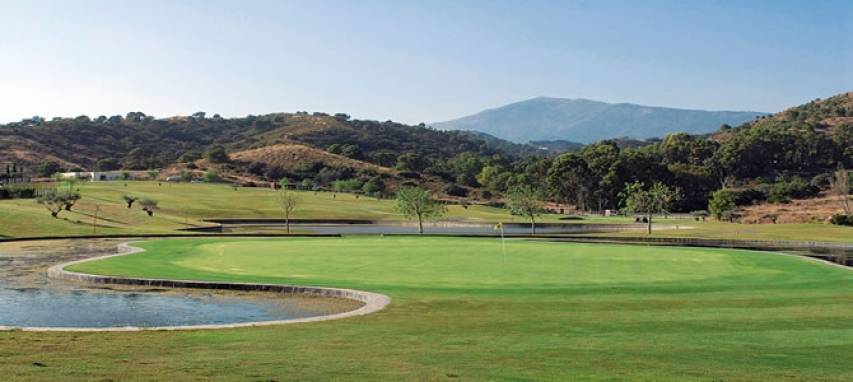For nearly 15 years, Ignacio Guerras has been at the helm of the regional golf federation with the highest number of officially registered players in Spain. During this extended period, much has changed in both the Madrid and the national Spanish golfing worlds, especially as a result of the drawn-out economic crisis suffered by the country. The head of the federation is optimistic about the future of golf in the Madrid regional community and believes the number of registered golfers could grow from the current 80,000 to as many as 100,000 over the next four to five years.
How would you describe, succinctly, Madrid’s golfing options?
Until not long ago the Madrid region had – in my opinion – quite poor golfing options. Over the past two to three years, together with Madrid Tourism and the association of golf clubs in Madrid, these amenities have been bolstered significantly. Madrid is not a golf destination but rather a hub, a destination for those passing through, and essentially a destination where we need to take advantage of all the annual fairs held here. And that’s why a year or so ago an agreement was signed with IFEMA (the organiser of major events at its Madrid fairgrounds venue).
What would you recommend to a golf tourist wanting to play for the first time in the Madrid region?
That they should definitely come here and enjoy the attractions of Madrid’s golf clubs, which include a very interesting and diverse range of quality courses. Madrid is home to some great courses, both classic and modern, created by renowned designers. Courses where major golfing events have been held…
Madrid has the highest number of officially registered golfers in Spain, even though it has a smaller population and fewer courses than Andalucía and Cataluña. Why do you believe this is so?
Because of their passion for this sport… At a regional level, golf has the second highest number of officially registered practitioners of any sport. It is true that we have fewer courses than Andalucía and Cataluña, but it is also true that we are a single-province region, with both the good and bad consequences that entails: good because the distance between our golf courses is shorter; and bad because, with less land available, we are unable to have as many courses.
It should also be noted, however, that a large number of courses have been built in surrounding regions, taking into account Madrid golfers, including two in Guadalajara, Ángeles de San Rafael, La Almarza, Layos, Naturavilla, etc.
Are Madrid’s courses able to cater for current demand or are more amenities needed?
Currently, and during the crisis, Madrid clubs have indicated that no more courses are needed. The reality is that in Madrid there are many quiet or off-peak days and hours. It is difficult to play on a Saturday or Sunday morning, but on a Sunday afternoon you can play anywhere.
Perhaps what Madrid needs are smaller amenities like the federation’s golf academy, in order to promote the sport more.
You have been president of the Madrid federation for 14 years, now in your fourth elected term. What are your challenges in the short to medium term presiding over golf in Madrid?
The challenges I have set myself in the short to medium term are to consolidate our sport in this region, developing championships for all kinds of players but mostly thinking about high-handicap golfers – who are those who are more likely to abandon the sport – providing encouragement with competitions created specifically for them.
I also cannot overlook another major problem with golf – the time involved. We need to keep fighting, without being diverted from the challenge, to achieve reductions in the time in takes to play golf.
Finally, the Madrid federation’s star programme, the “Madrid Golf Strategic Plan”, a programme we are working on together with the Madrid golf industry, to determine exactly what the situation is and what we need to do to increase the number of officially registered golfers by 20,000 federation licences over the next four to five years.
In short, what I want is a federation run for and by federated golfers.
Just over one-quarter of golfers registered with the Madrid federation are women. Is the federation working on increasing this proportion of females?
For the past few years, this has been one of the federation’s main concerns, and we have been working hard to resolve it. These days the women’s golf committee is very active, with a large number of competitions and significant demand among female players. There is a federation circuit with more than 20 legs and several other pitch-and-putt events.
Is there any data available on where Madrid golfers prefer to play outside their region?
There are many destinations but, at a national level, Andalucía and Levante (central-eastern Mediterranean coast) are perhaps the preferred ones, without overlooking Galicia and Cataluña.
How does the Madrid federation support its leading professional and amateur golfers?
As to be expected, the Madrid federation provides great support to leading professionals and amateurs, which is why we have a professionals circuit in Madrid with 20 legs, scholarships for our promising youngsters, and collaborations with various professional tournaments, such as the Santander Tour, Gambito, etc. When it comes to our leading amateurs, we have our own Blume, known as CETEMA, with eight to 10 children receiving scholarships for the whole year at a special college, with expert coaching and support from a psychologist, a physical trainer, dietician, etc.
We signed an agreement with the Francisco de Vitoria University for those wanting to receive a scholarship as part of a special educational arrangement. We began with two recipients, and have been increasing this number every year. We subsidise all kinds of championships at a national and international level, in both junior categories and senior, elderly and mid-amateur.
What contribution does the golf sector make to Madrid’s economy?
Madrid’s golf clubs represent a €107.46 million annual industry, generating a total of approximately 1,576 direct jobs and another 1,444 indirect positions.
Does the federation receive sufficient support from the various public authorities?
Unfortunately, in our region golf does not receive the support I believe it deserves and warrants.
